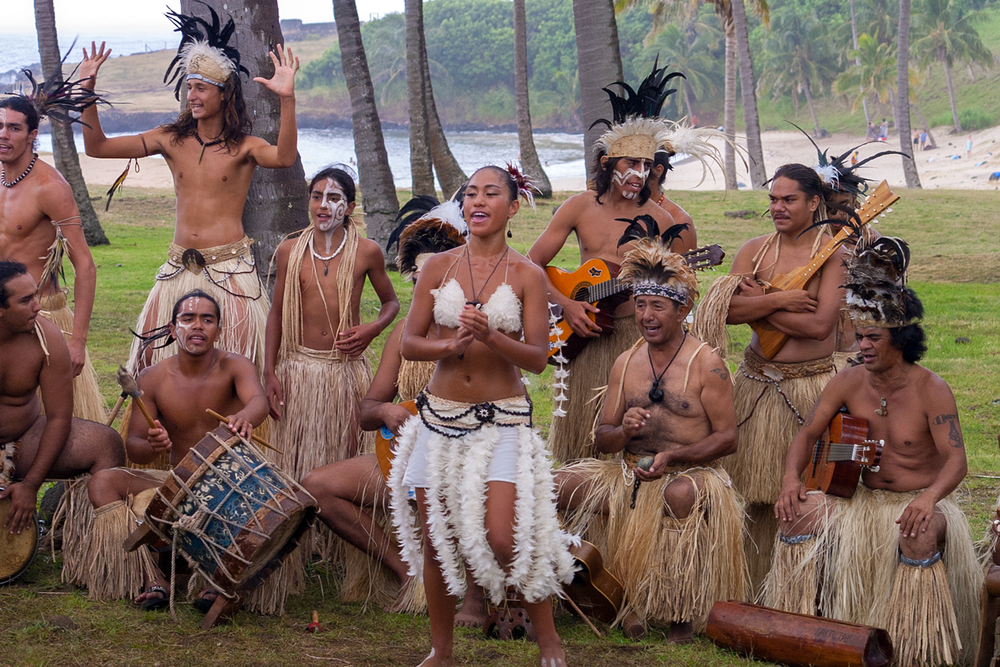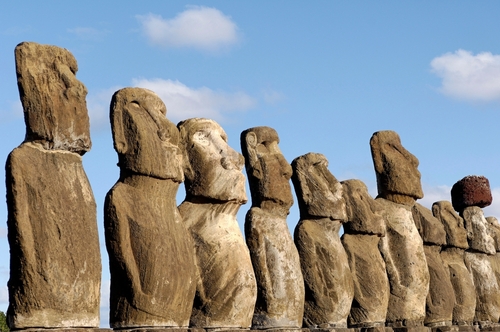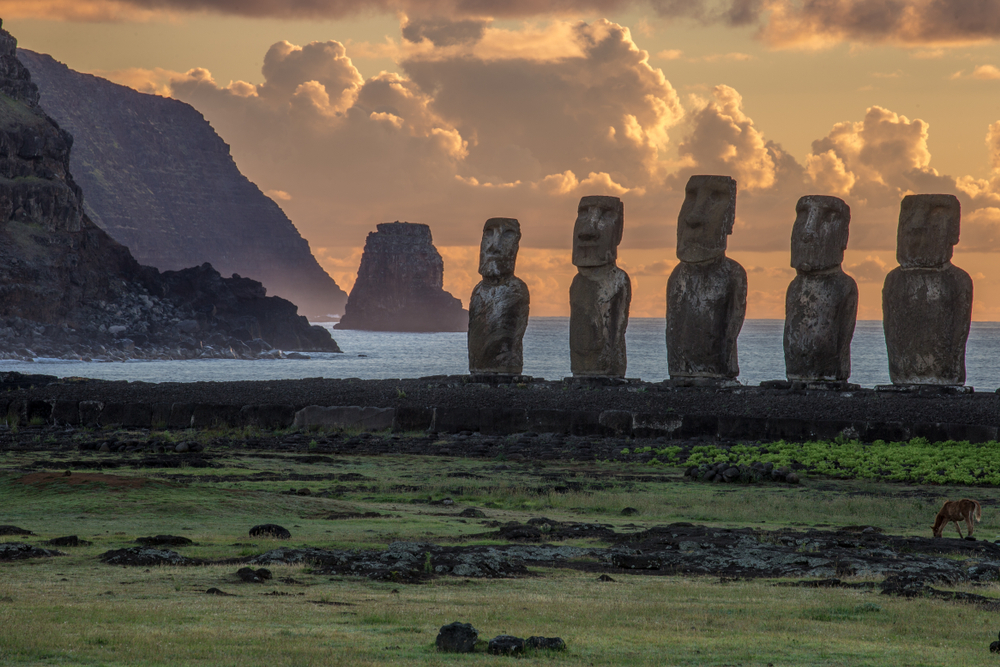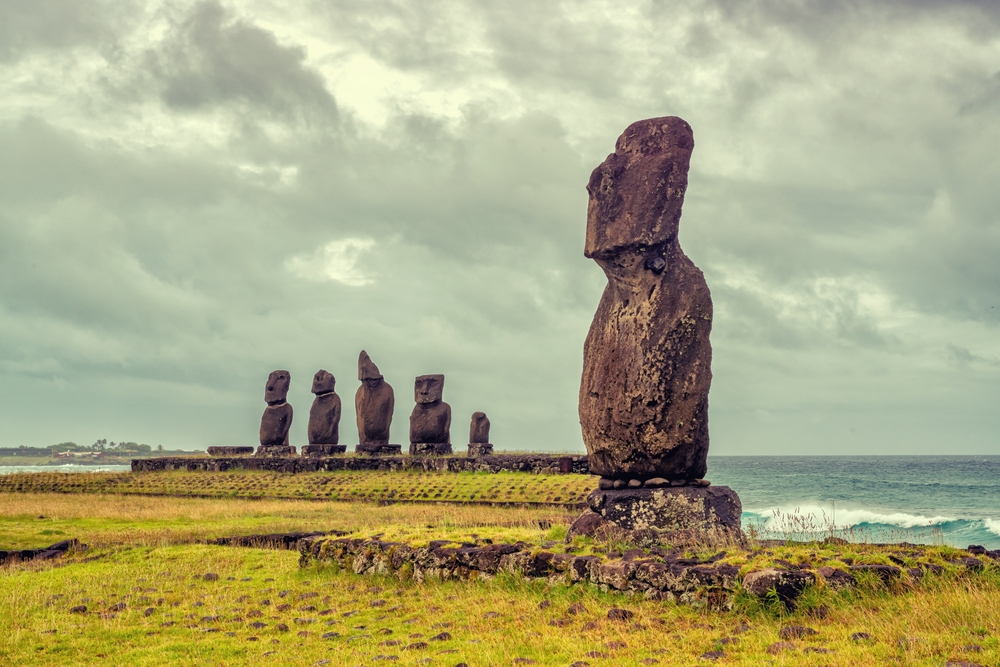After Centuries of Mystery, Scientists Finally Reveal How Easter Island’s Giant Heads Were Moved

For centuries, the Moai statues of Easter Island have stood as solemn witnesses to humanity’s boundless curiosity and quiet genius. Rising from the volcanic earth of Rapa Nui, their enormous stone faces have stared out toward the sea and sky for nearly a thousand years, stirring questions in all who meet their gaze. How could an isolated civilization, living on a remote island in the middle of the Pacific, have carved and transported such colossal figures—each weighing more than twelve tons—without the help of modern technology? The world saw them as immovable, eternal, and inexplicable, symbols of mystery frozen in time.
That mystery, however, may no longer be unsolved. After decades of debate, scientists believe they have finally discovered the secret of how these giants moved—and the truth is as elegant as it is inspiring. The Moai did not crawl, drag, or roll across the island’s rough terrain. They walked. Through rhythm, balance, and unity of motion, the ancient Rapa Nui people managed what once seemed impossible. And in understanding how they moved stone, we might also learn something profound about how to move ourselves—through obstacles, through doubt, and through the weight of the world.
Researchers suggest the Moai statues on Easter island were moved upright by rocking them with ropes, allowing them to "walk" to their destinations
— Science girl (@gunsnrosesgirl3) September 14, 2024
📹 Carl Lipo
pic.twitter.com/I5TGN7P3xV
The weight of wonder
Easter Island—known to its original inhabitants as Rapa Nui—sits isolated in the southeastern Pacific Ocean, more than 2,000 miles from the coast of South America. The island, shaped by ancient volcanic eruptions, is home to some of the most iconic and enigmatic archaeological works ever created: nearly 900 monolithic statues called Moai. Each was carved from volcanic tuff, a type of compressed ash, between roughly 1250 and 1500 CE. Most stand about 13 feet tall and weigh an average of 14 tons, though some are far larger. To the Rapa Nui, these statues were not mere art; they were living symbols of ancestry and spiritual protection. The Moai’s faces were turned inward toward the villages, as if forever watching over the people who gave them form.
For centuries, scholars and explorers have puzzled over how these figures could have been transported across such a rugged island landscape. Early European visitors assumed the statues were dragged with ropes over tree logs, a theory that persisted well into the twentieth century. But this hypothesis began to crumble under scrutiny. The island’s terrain was too uneven for such massive loads, and archaeological evidence showed no signs of the deep grooves that heavy dragging would have left behind. Even more puzzling was the oral tradition of the Rapa Nui people themselves, who said their ancestors made the statues “walk.” For many researchers, this was dismissed as metaphor—a poetic embellishment rather than a literal account. Yet the more archaeologists studied the statues’ design, the more that story began to make physical sense.
The base of each Moai, researchers noticed, wasn’t flat. It was rounded and slightly tapered, almost like the curved bottom of a rocking chair. The statues also leaned subtly forward, as though poised mid-step. Could it be that the design itself held the secret of movement? Could these ancient sculptors have engineered not only monuments but mechanisms—creating figures meant to sway, pivot, and glide upright along the paths that still trace the island today?

A revelation through movement
To test this theory, Professor Carl Lipo of Binghamton University and his colleague Terry Hunt from the University of Arizona built a full-scale replica Moai weighing 4.35 tons. Their goal was simple yet audacious: to see if it could “walk.” They wrapped strong ropes around the statue’s head and shoulders, dividing their volunteer team into three coordinated groups—one pulling from the left, one from the right, and one stabilizing from behind. When they began tugging alternately, the stone giant began to sway. Slowly, it started to move forward, rocking from side to side, each step measured and deliberate. In just forty minutes, a team of only eighteen people managed to make the statue “walk” one hundred meters.
“Once you get it moving, it isn’t hard at all,” Lipo explained to National Geographic. “People are pulling with one arm. It conserves energy, and it moves really quickly. The hard part is getting it rocking in the first place.” What they discovered was that physics—and a deep cultural intuition—made the seemingly impossible achievable. The curved bases and subtle tilts of the Moai were not accidents of artistry but engineering choices, designed specifically to allow controlled movement. The statues were, quite literally, built to walk.
Further studies of Rapa Nui’s ancient road network provided even more compelling evidence. Archaeologists found that many of the roads were gently concave, providing natural stabilization for walking statues. They often overlapped or ran parallel, suggesting the careful choreography of repeated movements over time. Each Moai, it seemed, had its own route, its own story of migration and balance. The roads weren’t simply transport routes—they were ceremonial avenues, sacred arteries through which art, spirit, and community pulsed as one. The Rapa Nui didn’t just move stone; they moved meaning.

Lessons written in stone and motion
What’s remarkable about this discovery isn’t only the physics—it’s the philosophy hidden within it. The Moai could not walk alone. They required rhythm, teamwork, and trust. Each person pulling on a rope had to listen—not with ears, but with their entire body—to the subtle shifts in weight, to the energy of the group, to the harmony between stone and soil. A single misstep could topple the statue, shattering months of labor. The process demanded patience, communication, and intuition—a dance between humanity and gravity.
In that sense, the Moai are not just relics of a vanished culture; they are lessons carved in stone about the power of balance. Progress, whether in ancient Polynesia or the modern world, depends less on strength and more on synchronization. The Rapa Nui achieved what they did not through domination of nature but through collaboration with it. They didn’t force the statues to move; they coaxed them into balance. This principle resonates powerfully today. In a world fractured by competition, climate crisis, and technological acceleration, the Rapa Nui’s wisdom offers a quiet counterpoint: that our greatest achievements come when we move together, not apart.
It’s tempting to think of innovation as a modern invention, but discoveries like this remind us that creativity is timeless. The Rapa Nui didn’t need digital blueprints or algorithms. They needed understanding—of weight, rhythm, cooperation, and faith in each other. The walking of the Moai is, in essence, a metaphor for humanity itself: each of us a part of the same system of balance, capable of moving mountains when we find the right rhythm.

What ancient ingenuity teaches modern minds
The discovery also challenges our assumptions about intelligence and progress. Too often, we measure advancement through technology, forgetting that wisdom often comes from working with, not against, the natural world. The Rapa Nui mastered a principle that modern engineers now rediscover in fields from robotics to sustainability: efficiency through resonance, design through empathy. They found harmony between human intention and physical law.
This revelation forces us to look inward as well. How often do we struggle against the immovable weights in our lives—our fears, habits, and limitations—when balance, not force, might be the key? The Moai’s movement invites us to reimagine our relationship with effort. Sometimes, progress is less about pushing harder and more about aligning our steps with the rhythm of what’s possible. In that way, Easter Island’s lesson extends beyond archaeology—it’s psychological, spiritual, and environmental all at once.
From a sustainability perspective, the Moai also echo an ecological warning. Rapa Nui famously faced deforestation and resource depletion centuries after its golden age of carving. Scholars debate the causes—overuse of trees for transporting statues, the introduction of rats, or shifts in climate—but the deeper truth remains: even ingenious civilizations can lose balance. The same harmony that moved the Moai may have been forgotten, and with it, a fragile equilibrium collapsed. Today, as we face planetary-scale challenges, their story stands as both triumph and caution: innovation without balance leads to ruin, but balance with purpose can make even the earth itself move in rhythm with us.
The poetry of persistence
The Moai still stand, gazing across Rapa Nui’s rolling fields and crashing waves, their presence an eternal dialogue between humanity and nature. Weathered by centuries of wind and rain, they continue to remind us that legacy is not about permanence, but about endurance. The Rapa Nui did not carve their ancestors into stone to defy time—they did it to embody it. Each Moai is both a memory and a message: that what we build in harmony lasts far longer than what we build in haste.
Carl Lipo’s challenge to the world—“Find some evidence that shows it couldn’t be walking”—rings beyond academia. It’s an invitation to see differently, to question assumptions, to look for the rhythm in what seems still. The statues may no longer move, but their story continues to walk through our collective imagination, reminding us that curiosity is humanity’s oldest motion.
The mystery of the Moai has never just been about how they were made or moved—it has always been about what they represent: unity, creativity, and resilience. When we look at those stone faces, we’re not staring at the past; we’re staring at ourselves. Because deep down, every human being carries the same potential—to turn obstacles into pathways, to find balance in chaos, and to make even the heaviest burdens walk toward the light of understanding.
Loading...

